If you use Instagram in a professional setting – as a PR company, a business owner, social media expert, influencer, and more – you’ve likely heard of the ability to buy likes, followers, views, and comments.
Nowadays it seems like just about every large account is buying in some way or another. Whether it’s buying likes to increase engagement so you can get freebies, or buying followers to gain “influencer” status overnight, I can’t go a day without scrolling through my feed and spotting someone buying on their account.
What Buying Is and Why People Do It
Buying can happen in a few different ways.
- Buying followers: Accounts will buy followers in order to look like they have more influence. This is done to convince businesses that you have a larger audience so that they will give you free products and pay you more for campaigns.
- Buying likes: Buying likes is done on an individual post to help look like you have higher engagement rates. Everyone from small “micro-influencers” to larger accounts will do this to look like they have more influence on their audience. If an account buys followers, they likely have to buy likes as well to make it look like their fake followers are engaged.
- Buying comments: Comments can also be bought and are typically purchased for the same reasons as likes. They’re always generic and add no value for businesses using Instagram as a way to advertise.
- Buying views: similarly, it’s possible to buy views on individual videos to look like there was more reach. Again, this is done to trick companies into trusting you for advertising campaigns.
How To Spot When People Are Buying
Believe it or not, it’s fairly easy to spot those who are buying if you take your time to investigate.
Fast increases and decreases in following
One way to identify bought followers is to see how fast they are gaining and losing. If an account goes fro 2,000 followers to 10,000 followers in a week, and then has close to 100,000 by the end of the month, they either bought those followers or became a celebrity overnight – but I’d be willing to bet anything that they just spent some money on new “followers.”
After the large spike, they tend to bleed followers until their next purchase. Because Instagram is constantly shutting down fake accounts, they begin to lose the followers they purchased. This causes a trend of buying a lot, losing a few, and buying again.
While it can be hard to figure out how many followers people are losing and gaining per day, there are apps that can help. One free app called Social Blade shows you the 30 day gain and loss for followers, following, and posts. This app, screenshot below, can help identify the gain and loss patterns for accounts that you suspect might be buying.
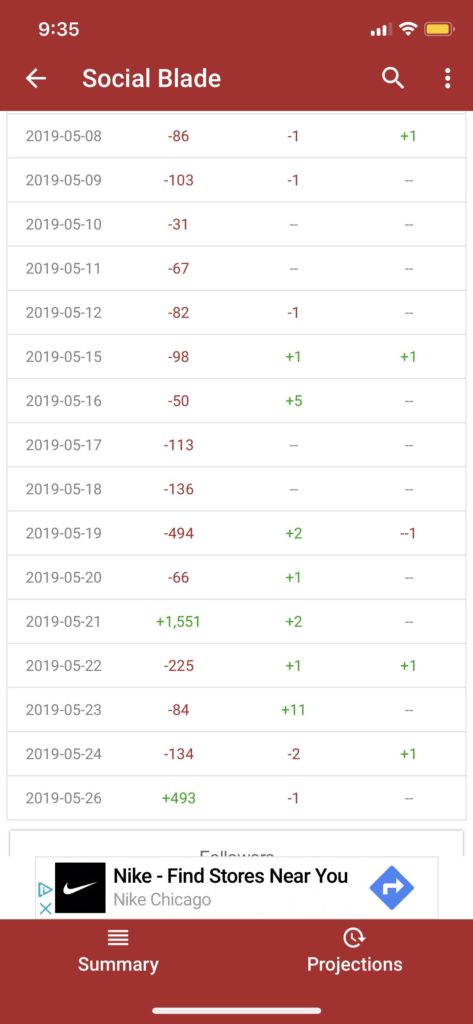
The Social Blade account results of someone likely buying followers. Column 1 shows followers, column 2 is following, and column 3 shows posts on their page (whether or not they posted that day)
As you can see, this account loses followers at an aggressive amount daily and then, to make up for the losses, buys a large amount on a single day. Also, because they don’t have a post that day or the day before, you can see that there wasn’t a giveaway they posted that could have led to them gaining more followers that day.
In addition to just buying followers, some accounts try to beat the system by using bots to follow/unfollow similar accounts for them. These bots (also called automations) are purchased to follow random accounts on your behalf, so hundreds or thousands of people will see a new follow from your account. Some work by letting you specify hashtags they use, account size, account type, or other factors. You can also specify how many you want it to follow per day.
Once the account follows you back, or after a specific amount of time, it unfollows them for you in hopes that you keep the follower without your following number getting too high.
In a simple Google search of “Instagram follow unfollow bots” I immediately found a handful of sites offering this service, for example, Instazood.
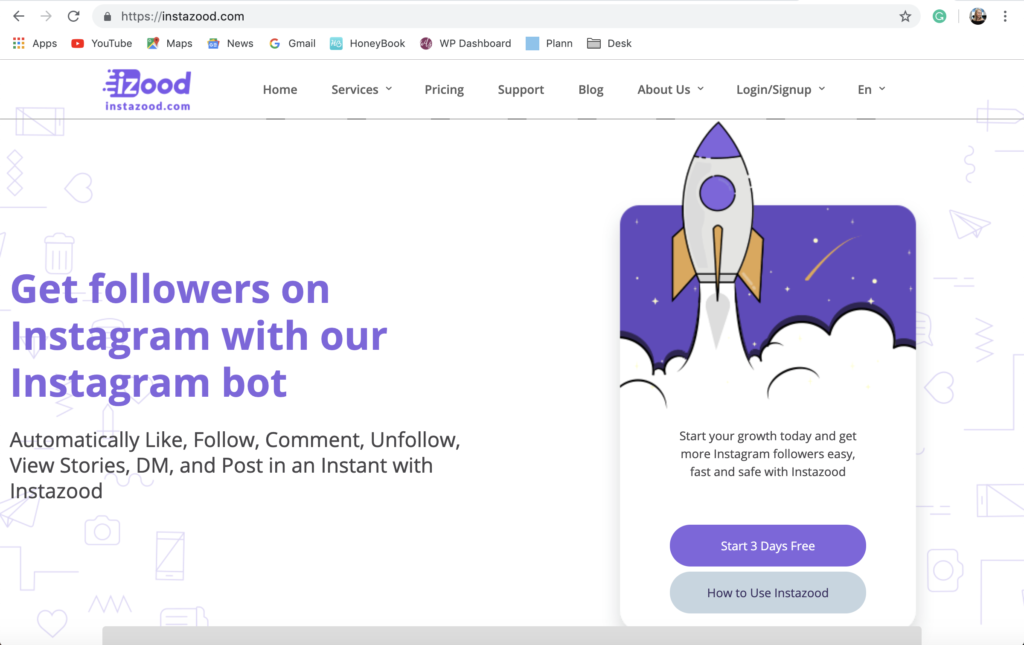
For accounts that use these services to follow on their behalf, you can also see clues in Social Blade. For example, here’s an account that is likely using these services:
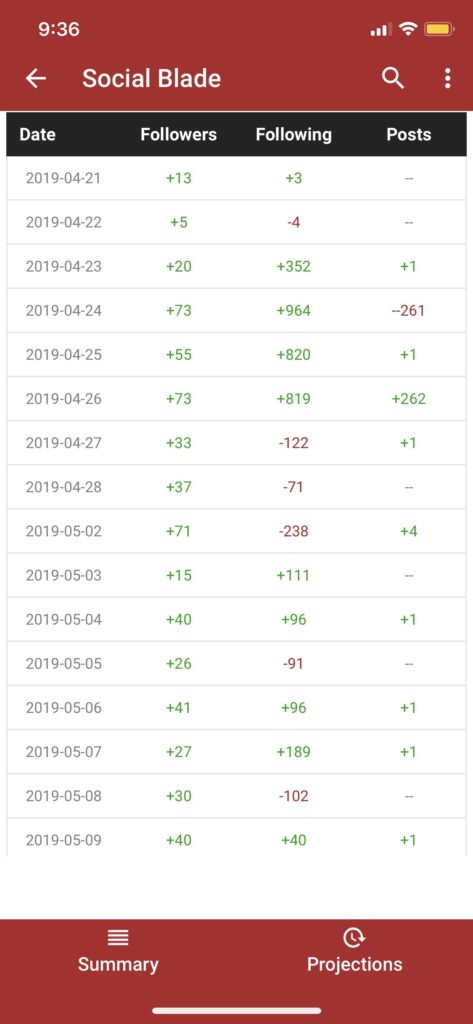
A few things you’ll notice in this screenshot: column 1 (followers) increases at a steady amount, column 2 (following) goes up a huge amount – more than one person is going to sit and follow in a day – then occasionally purges, and column 3 is a steady posting schedule that wouldn’t cause a huge change in following.
Hundreds of new likes overnight
One big way to tell if someone is buying likes is seeing when they started. What I mean, for example, is seeing if they went from 100 likes per post to now always having 600 or so likes per post. While you can occasionally get a post that hits an “explore page” and sees a huge uptick in likes, it’s rare to go from always averaging in the hundreds to always averaging in the 600s (or always in the 300 to the 1,000s, etc).
Immediate likes
The biggest identifier of bought likes is the speed at which the likes come in. When buying likes, they typically surge immediately after someone has posted.
For example, in 3 minutes they’ll have 45 likes, in 10 minutes 100 likes, after 20 minutes 250 likes, and after 30 minutes upwards of 100 likes. Then, after about an hour, the like count tapers off and you won’t see much of an uptick in their likes amount, because the purchases are done and now the few real engagements come in.
As you can see below, this account that used to average 120 likes per post, and now averages about 600 likes per post, had 400+ likes after 30 minutes.
For this account in particular, with about 5,500 followers at the time, this was an extremely fast influx of likes. But, when evaluating accounts speed of likes, keep in mind the overall account size. For some larger accounts, this might not be as telling of artificial engagement and more research should be done in conjunction with just looking at the speed of likes they get.
NOTE: NO ACCOUNT NAMES SHOWN IN THIS POST SHOWCASE THE ORIGINAL POSTER.
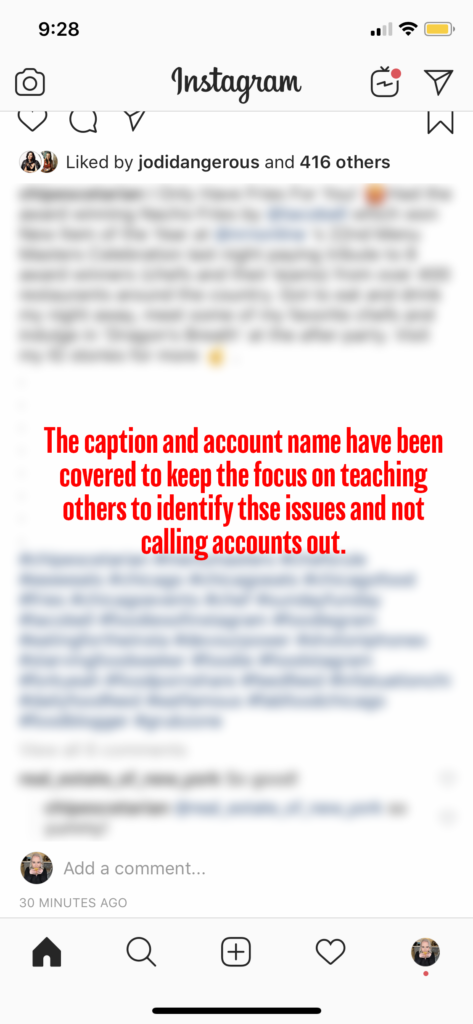
Likes from foreign accounts
The majority of bought likes are from foreign accounts. One way to identify this is to click on who liked the post and scroll through a bit. If the vast majority are in a foreign language or accounts that have no followers themselves, they were likely purchased.
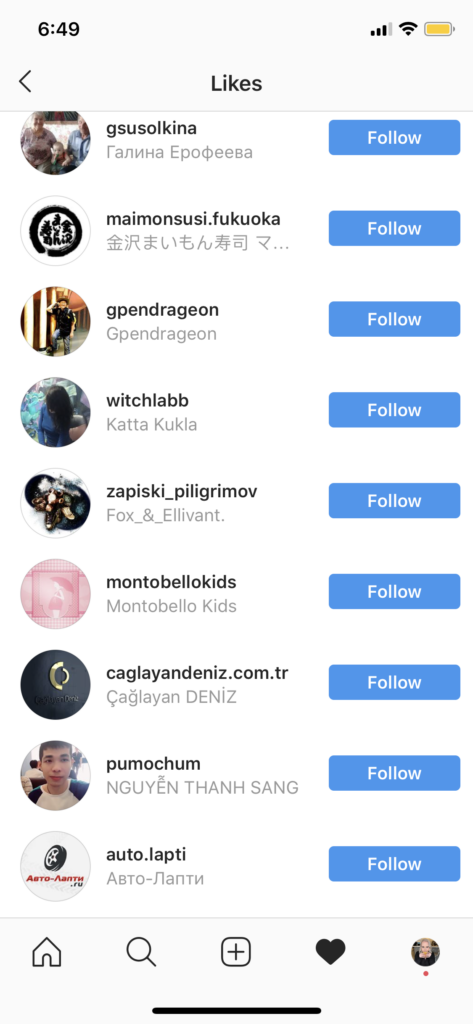
The same amount of likes on every photo
As I’m sure you’ve heard people say that the algorithm is always changing. Because of this, engagement is constantly in flux. For smaller accounts, this could mean ranging from 80 – 200 likes on posts depending on how the algorithm worked for them that day, while with larger accounts it could range from 300-600 likes.
But, if someone buys 500 likes every day, they’re not going to have a fluctuation. They’ll always sit between 550 and 600 (depending on how many real people actually engaged as well) because they don’t rely on the algorithm, they rely on their bank account.
Thousands of likes and no comments
If someone is getting real engagement, they’ll also be getting some authentic comments. When there’s a huge mismatch in this, it’s likely due to bought likes and not buying comments in addition (don’t worry, if they’re buying all their comments, too, I have some tips to help you identify this).
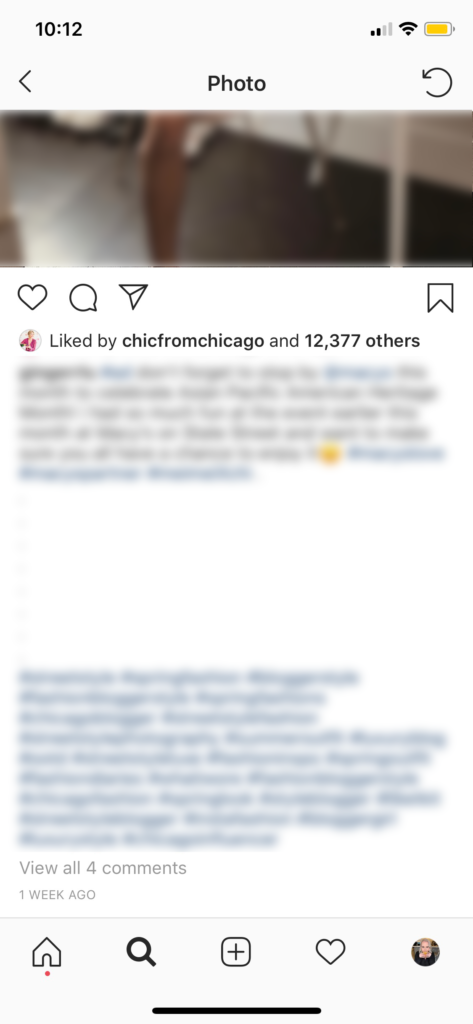
Hundreds of likes on a video with only a handful of views
One of the easiest ways to tell if someone is buying likes is to see how many likes they get on a new video. When someone buys only likes and not views, the like count will quickly surpass the views.
While in some cases, a video might get a few more likes than views when it’s first posted (a view requires 3-5 seconds of watching the video, so if people are aimlessly scrolling through their feed and liking everything, they may give you a like but no view), this would be by about 5 likes and not hundreds.
Take this screenshot for example (again, no one shown in this video represents the account who’s video this screenshot represents):
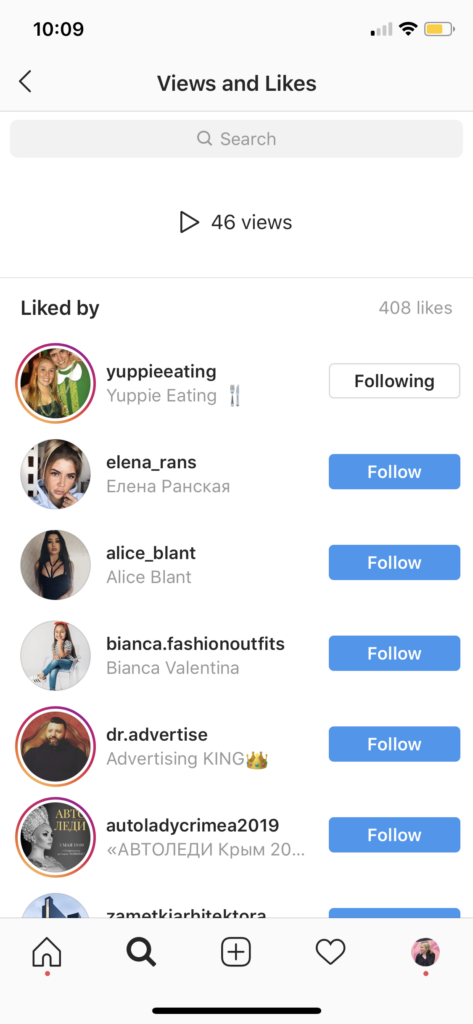
Generic comments that aren’t related to the post
When it comes to bought comments, it’s fairly easy to tell who’s buying and who isn’t. That’s because these purchased comments are usually one to four words and a slew of emojis that tell you how great you are, what a lovely feed you have, “love,” or some other statement that’s unrelated to your caption.
While there are some accounts that use bots to share a comment when a specific hashtag is used – for example for fashion hashtags there are companies that then tell you how gorgeous you are, that they need you as a brand ambassador, and to email them for more details – these bought comments are typically shorter and less relevant to the original post itself.
A low audience quality score
There are also services that will audit an account for you and give you a rating for the authenticity of their following. For example, IG Audit is a free service that will review accounts and give you insights on if their following is authentic.
For example, here’s an audit of my account:
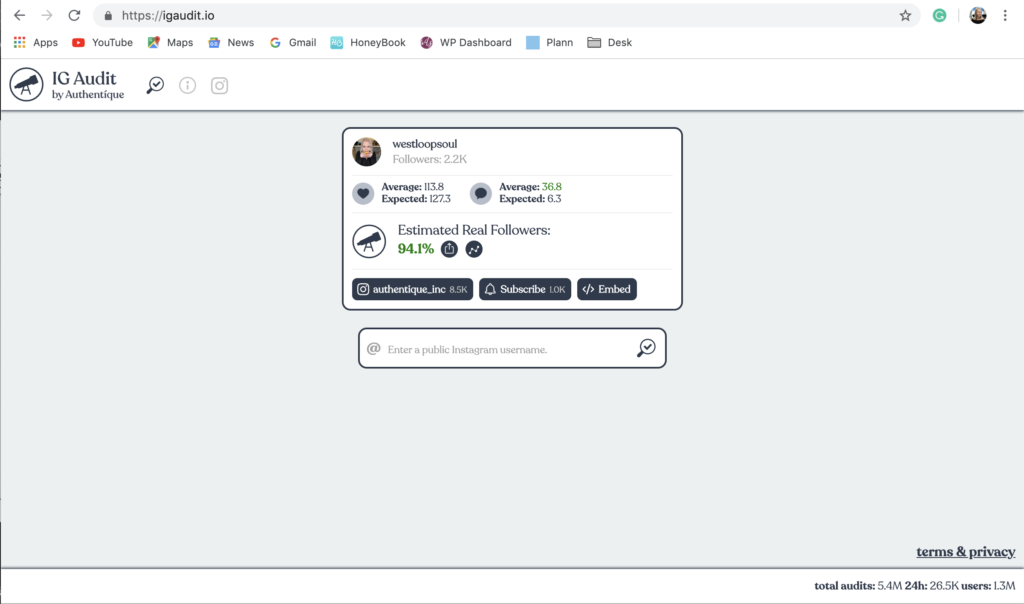
Now let’s compare this to the audit of someone I suspected bought followers and likes:
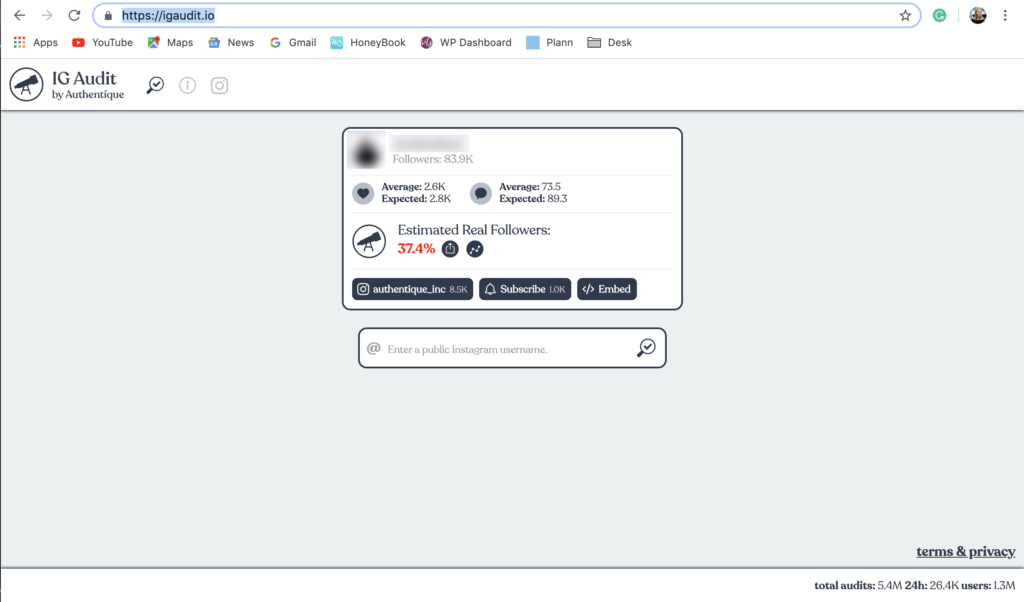
One thing to keep in mind when reviewing results is that large accounts, and some smaller accounts as well, will likely get some disingenuous followers. Between bots working on Instagram and other factors, it’s nearly impossible to keep your account perfect. A percentage above 70% indicates they likely work to keep an authentic following.
Buying Likes vs. Promoting Posts
In addition to buying likes, you’ve probably seen the button to, “Promote this Post.” When I discuss bought engagement with people, they often try to justify it by comparing it to promoting a post. But, that couldn’t be more wrong.
I admit that, on occasion, I promote posts. If I posted content that should have done well but had minimal reach due to the algorithm or promotes a product that I truly believe more people need to see, I will occasionally use $6 to promote it.
The difference between promotion and bought engagement
When you promote a post, you have control over who sees that post. You can choose the geographic areas in which it’s seen, age range, their interests, and gender. So, if I’m giving more reach to a photo of my new favorite rooftop bar, I can ensure that this is being seen by residents of Chicago who are 21+ and enjoy going out, nightlife, and cocktails.
Do you see the difference there? Instead of buying fake engagement from bots that aren’t real and aren’t going to ever step foot in that rooftop bar, I am just ensuring that more potential customers within their demographic see the content.
And, unlike bought likes where you guarantee engagement, promoting a post only guarantees more impressions (more time the content is seen). You still have to have quality photos and content in order to get likes on the picture. So, you could promote a post, but if it’s a blurry, horrible photo with no caption, you still won’t get an uptick in likes, whereas if you buy likes you’ll be guaranteed however many pointless likes you buy.
Why This Hurts Small Businesses
So, why do I bring this up? As someone not purchasing engagement on my account, it’s easy to say this doesn’t impact me and to mind my own business. But the reality is, whether these “influencers” realize it or not, they are putting small businesses out of business.
Let me put this into perspective.
A family-owned restaurant has been struggling for months. They’re on the verge of closing and have limited money left to spend on marketing. So, they work with some local food influencers.
The influencers boast a large following and great engagement rates, so the family puts trust into them to get them awareness and bring new people into the restaurant, so they comp a meal.
The influencer comes in and eats $100 worth of food. Maybe they tip, though the sad reality is that I often see them say, “I don’t have cash so I’m not going to tip,” and they leave. Sidebar to my fellow influencers: if you ask them to run a dollar or penny, you can then tip on your card.
The restaurant is now out the money for the food, to compensate their staff, any alcohol you drank, and out the money they could have made from giving that table to a paying customer. So, in reality, they’re out far more than the $100 you think your meal would have cost.
Now, you post.
While they think that hundreds or thousands of people have seen your content, it was really only seen by maybe 40 real people in the city the restaurant is in, and the rest were fake engagement. And, often in these cases, those 40 other people are usually just other influencers who will either get free meals there, as well or simply won’t be coming in.
If the restaurant does this a few times, they could go out of business because they never get the ROI they expected, and their business never improved.
Now do you see why I get so upset seeing people buy engagement?
Is Influencer Marketing Bad?
So, after all of this, is influencer marketing bad?
As a marketing professional, I believe that effective influencer marketing – using authentic influencers with real engagement – can be extremely effective for specific markets and products.
When an influencer has built trust with their followers and developed a relationship with them, their opinion matters far more than that of a Facebook ad or Google Ad. They can bring in a true ROI and provide a huge value to restaurants, businesses, products, and more.
Rather than eliminating influencer marketing from your plan, I strongly encourage you to do your research and make sure to work with influencers who have authentic followings and engagement, take great photos (you can then ask to repost and reshare these, so you also can get some new social media photos out of the engagement), have similar values to your company, and engage back with their audience.
I hope the services and tips outlined above can help you make more informed decisions in your influencer partnerships, which PR companies you work with (spoiler alert: some PR firms buy their followers and engagement, too, so do your due diligence before signing a contract), and, if you are someone buying engagement, I hope you rethink your choice and consider the impact you’re having on these small businesses who use this marketing tool as a last effort to stay in business.
At the end of the day, both PR and influencers can oftentimes artificially inflate their numbers to sell restaurants and brands on their services; everyone ends up winning except for you. Learn how to recognize the signs and stay informed so that you can both protect your business and leverage influencer marketing for your benefit.
Do you have questions about Instagram? Contact me to learn more, have your questions answered, and for information on how I can help you optimize your social media marketing.

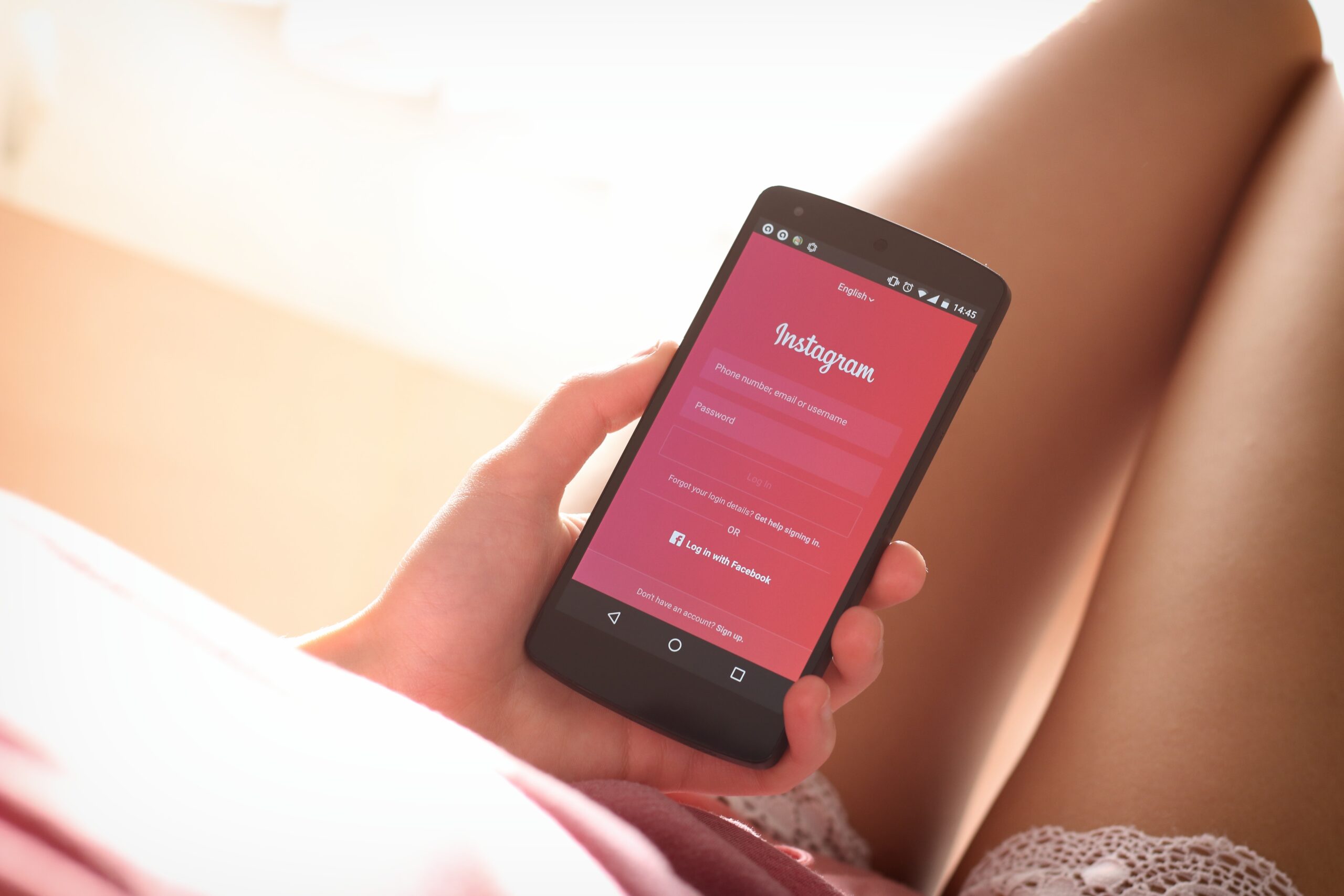
0 Comments